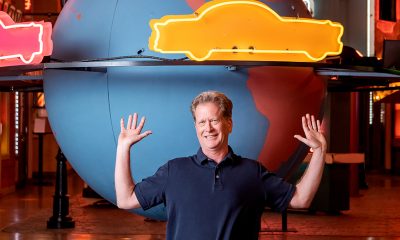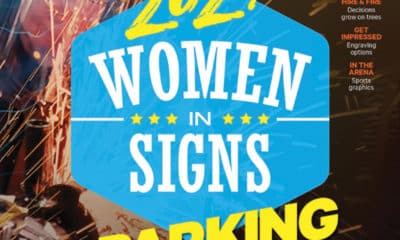This was one of several sign-related projects that earned a 2011 SEGD Design Award.
The University of Washington currently educates more than 40,000 students, in a highly progressive region. Thus, current and prospective students expect environments that provide as much inspiration as function. Michael Garvey, a prominent Seattle attorney, entrepreneur and philanthropist (and UW grad), generously sponsored the construction of PACCAR Hall, home of UW’s Foster Business School (LMN Architects devised the building) and wanted to create an environment conducive to creative thinking.
In turn, James Jiambalvo, dean of the Foster School, and LMN Architects turned to UW’s School of Art’s design department – conveniently located next door to Paccar – to develop a permanent environmental-graphic program that would stimulate Foster students.
Karen Cheng, a design-department professor with extensive experience in the field of typography, collaborated with Kristine Matthews, a fellow faculty member and principal of Studio Matthews, a Seattle firm that designs exhibit graphics and wayfinding, to devise a bold graphic statement. They considered the perpetually evolving nature of the business world, and opted for “Change” as the textual focal point, with smaller, complementary synonyms that reinforce the theme.
And, rather than producing garden-variety wall graphics, they took the message to ground by integrating text into the custom, granite flooring installed in the corridors around the elevators of the six-story building. Words set outside the elevators modify the theme and create unique word pairings (i.e., Local change/global change; lead change/manage change).
Advertisement
Naturally, durability was a concern, given the heavy foot traffic. Cheng and Matthews initially considered aluminum, but decided stainless steel would be to prevent scratches in the large letterforms. Further, they decided waterjet-cut letters would provide the best finish, and they contacted Definitive Solutions & Technologies, an Auburn, WA-based, waterjet-cutting shop that services sign companies and numerous other industries. The letters, which vary from approximately 3 to 14 in. tall, fit tongue-in-groove into the stone flooring.
“We designed the signs in all caps to make them more legible, and we settled on Trade Gothic Bold, because of its non-serif, straightforward appearance,” Cheng said. “And, we create a double meaning for change by including coins from various world currencies and embedding them within the stone.”
Matthews said, “I was brought in very early during the building’s construction. Being included so early in the process helped us work efficiently from concept to completion.”



 Projects1 week ago
Projects1 week ago
 News2 weeks ago
News2 weeks ago
 How To1 week ago
How To1 week ago
 Real Deal3 days ago
Real Deal3 days ago
 Editor's Note4 days ago
Editor's Note4 days ago
 News3 days ago
News3 days ago
 Photo Gallery1 day ago
Photo Gallery1 day ago
 News1 week ago
News1 week ago









